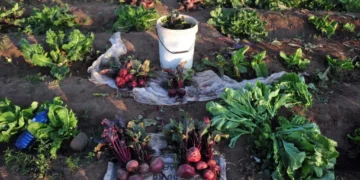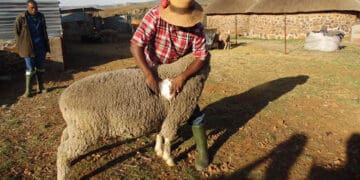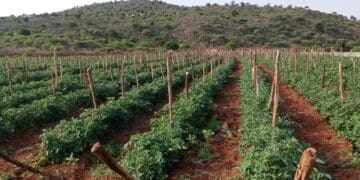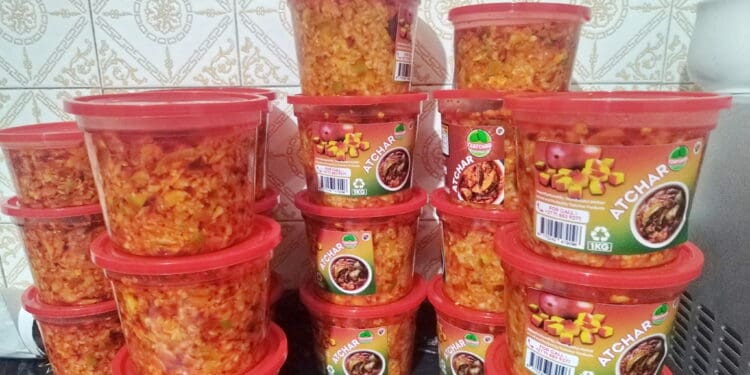When Limpopo’s mango trees and orchards spring to life, they do not just promise juicy fruit. They herald a season of jars, jars, and more jars of atchaar.
With most of South Africa’s commercial mango production rooted in the province, green mangoes destined for the atchaar market are quietly supporting rural livelihoods. Behind every spicy, tangy bottle of atchaar is a story of hectares planted, fruit harvested, and opportunities unlocked for small-scale producers and households.
According to the South African Mango Growers Association (SAMGA), South Africa produces over 80 000 tons of mangoes annually.
Limpopo contributes more than 55 000 tons, making it the country’s leading mango growing region. The 2024/25 season saw a 10% increase in green mango supply, driven by improved flowering and stable weather conditions.
Between 25% and 35% of Limpopo’s mango crop is absorbed by the atchaar market, particularly varieties such as Tommy Atkins and Sabre, which hold their firmness during processing.
“The atchaar market is crucial for small-scale farmers,” said Lerato Phalane, SAMGA industry analyst.
The season provides a reliable outlet for green mangoes that may not meet fresh-market export standards.
In Tzaneen, the Morokolotsi Mango Atchar factory serves as the main buyer, providing a reliable market for green mangoes that may not meet export or fresh-market standards.

Turning green mangoes into atchaar offers a valuable income stream for many rural households, especially for families with backyard or small-block orchards. This season is widely seen as a cashing-in period, with Morokolotsi Atchaar acting as the central buyer.
“Mangoes don’t even stand a chance of getting yellow. Even farms that can’t sell to big companies sell to the biggest Morokolotsi atchar factory. It’s how we make our season money,” Tenne Mashile, a resident of Ga-Sekoroko, explained.
Many households sell mangoes by weighing and crates.
“If you want to buy or sell the fruit, one small crate is about R90, but sometimes they don’t count by the crate because not everyone has a crate. They put it on the scale, so if it weighs 150 kg, sometimes they pay you R200. If it’s 100 kg, you get R150,” he said.
“This way, everyone can sell, whether they have crates or not.”
The economic impact of atchaar production reaches beyond individual households.
According to the Department of Agriculture, Land Reform and Rural Development (DALRRD), over 12 000 small-scale producers in Limpopo earn livelihoods through mango atchaar manufacturing, selling, and distribution. A sector dominated by women and youth.
“For many families, atchaar production is more than a seasonal activity, it’s a cornerstone of rural entrepreneurship,” said Thabo Mokoena, DALRRD agro-processing coordinator.
Many young people find employment in this sector, helping with harvesting, processing, packing, and logistics.
Mahlodi Moloto, a youth entrepreneur who sells her own atchaar expressed that the season is best for business.
“I work during the season processing atchaar and packing. It’s a great opportunity because I buy mangoes for less money, and producers enough atchaar to sell, ” she said.
Moses Shai , a bakkie operator, explained that transporting the mangoes from households and small farms to the factory is another key part of the value chain.
“I drive around villages, buy mangoes from farmers, and bring them to the factory. Without this step, the fruit can’t reach the production line. I make a living and help the community earn too,” Shai said.
Some bakkie operators compete to buy mangoes from households and resell them to Morokolotsi Atchaar for profit.
“The bakkie people compete on rates for buying mangoes and they have to resell to the mango factory,” Mashile explained.
“Even people who don’t have mango trees but have bakkies also benefit. Everyone eats. It’s an ecosystem for entrepreneurship in these villages during the season.”
Cross-provincial demand for atchaar is also growing.
The Bureau for Food and Agricultural Policy (BFAP) reports that township-produced foods such as atchaar have seen steady growth in Gauteng, Mpumalanga, and North West, strengthening trade links for Limpopo’s small businesses. The informal value chain supports spaza shops, roadside traders, and cross-border suppliers serving Zimbabwe, Mozambique, and Botswana.
However, challenges persist.
SAMGA warns of rising pest pressures such as fruit fly, water shortages, and recurring heatwaves, which could threaten long-term mango quality and supply. Investment in pest control, irrigation systems, and orchard rehabilitation remains a priority to sustain the industry.
As atchaar pots simmer across villages and towns, the province’s mango economy continues to anchor household incomes and stimulate rural entrepreneurship.
“This season isn’t just about mangoes but also about feeding our families, keeping our kids in school, and making sure our community can survive and grow. So every mango counts,” Mashile concluded.
Azwi@vutivibusiness.co.za























































